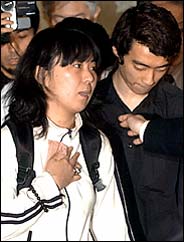 The three Japanese people initially taken hostage in Iraq may have thought that they were having the worst experience of their lives. Apparently, Japanese politicians and right-wing organizations are making it even more unpleasant for them now that they are back home. The way these people have been treated in their home country is cruel, heartless–and highly politically motivated.
The three Japanese people initially taken hostage in Iraq may have thought that they were having the worst experience of their lives. Apparently, Japanese politicians and right-wing organizations are making it even more unpleasant for them now that they are back home. The way these people have been treated in their home country is cruel, heartless–and highly politically motivated.
Usually these people would not be treated like this. In America, we greet returning victims of kidnapping with yellow ribbons. Japan does not have that custom, but usually it treats with high regard those sons and daughters of Japan who have shown strength overseas, representing Japan well.
These three should have been such heroes of Japan. Nahoko Takato, 34, was helping Iraqi street children, an act of selfless charity at her own great personal risk. Even after her ordeal in Iraq, she did not want to stop helping people in the war-torn country. The kidnappers, she said, “did things to me that I did not like. But I cannot hate the Iraqi people.”
Soichiro Koriyama, 32, is a freelance photographer, and sees it as his job to document what is happening in Iraq. He has photographed people who have suffered from war and disease in developing countries like Thailand; this is no money-seeker, but a man who wants to publicize the suffering of people in an attempt to stir awareness of their plights, to make people aware of what is happening in the world so they can help. Koriyama, a former soldier in Japan’s self-defense forces, labored as a construction worker in Japan to raise the money to go to Iraq.
The third, Noriaki Imai, is a man concerned with depleted uranium shells used in wars; these shells are left behind in war zones, and create a radioactive hazard, contaminating the landscape; Imai planned a picture book about Iraqi children poisoned by the shells.
These were no seekers of fame, they were not there for the money or the glory. All three of them wanted nothing more than to help others who could not fend or speak for themselves. The three are humanitarians all. And two of them, Takato and Koriyama, wanted to keep on doing their work, despite the great risks involved. And that dedication to the welfare of others was their downfall.
Once Koizumi and the right-wing politicians heard that at least two of the three former hostages wanted to stay on, the attacks began. Koizumi said publicly, “It doesn’t matter how good their intentions are. After this ordeal and having had so many officials working without sleep or food to help them, they still talk that way. They should be aware of their actions.” Another politician said, “If they really hate to return to Japan, I want them to defect to Iraq. Since we’ve paid so much from the state coffers, I feel they should compensate us for it.”
Why such icy hatred? Well, the three humanitarian heroes had become inconvenient to a conservative government that is intent on dismantling a vital part of Japan’s constitution, the part that says Japan should militarize only for self-defense, and never for offense. Japan’s participation in Iraq, no matter how small and tenuous, is the first fragile step towards bringing Japan back onto the world stage as a military power. It embarrassed Koizumi and his party, with a bellwether election just a few weeks away to test how the public reacted to the new role of the military. The hostages screwed up that mission for them because Japanese citizens started asking why the troops were really there, and perhaps they should be removed. Japanese friends I have spoken to about this say that they would prefer the troops come home, especially if it puts Japanese into harm’s way.
The government could not stand this. So as soon as the Japanese government (some say by bribing the hostage takers) successfully got the hostages released, they wasted no time in vilifying them. They called the reckless, irresponsible, trouble-makers, self-righteous, nuisances, even “Japan’s shame,” and attacked them for going into harm’s way. They whined about how government workers sacrificed so much, and the government spent so much time and money to help them, and they want to stay in Iraq?! Ultra-right-wingers–a nasty group here in Japan–showed up at the airport to insult and harass them.
Then the real smear campaign began. Takato, the woman who helps street children, was featured in the gossip rags and right-leaning newspaper editorials as a juvenile smoker and drug addict who had connections with terrorist organizations. Noriaki Imai was accused of coming from a Marxist home and was called a “communist sympathizer,” however that could possibly have any relationship to his work to help children in Iraq.
To add insult to injury, the Japanese government plans to bill them at least $6000 for air fare and medical checkups.
Having returned home, they have been so hopelessly smeared by the right-wing establishment in this country that neither they nor their families can show themselves in public. Nahoko Takato had to be calmed with tranquilizers, and doctors have announced that their treatment here in Japan has been far worse in many ways than their captivity in Iraq:
Dr. Satoru Saito, a psychiatrist who examined the three former hostages twice since their return, said the stress they were enduring now was “much heavier” than what they experienced during their captivity in Iraq. Asked to name their three most stressful moments, the former hostages told him, in ascending order: the moment when they were kidnapped on their way to Baghdad, the knife-wielding incident, and the moment they watched a television show the morning after their return here and realized Japan’s anger with them.
“Let’s say the knife incident, which lasted about 10 minutes, ranks 10 on a stress level,” Dr. Saito said in an interview at his clinic on Thursday. “After they came back to Japan and saw the morning news show, their stress level ranked 12.”
Well, Koizumi’s tactics worked. They won the elections.
And three selfless Japanese heroes have been ground into the dirt. Job well done.
 Believe it or not, the street you see at right is a two-way street. Go ahead. Look at it. See if you can figure it out. And for perspective, that white truck parked in the back on the right, it’s a mini-truck, no wider than an American postal jeep. And even two of those would have a hard time passing each other on this street–and yet, I saw a good deal of opposing traffic pass here.
Believe it or not, the street you see at right is a two-way street. Go ahead. Look at it. See if you can figure it out. And for perspective, that white truck parked in the back on the right, it’s a mini-truck, no wider than an American postal jeep. And even two of those would have a hard time passing each other on this street–and yet, I saw a good deal of opposing traffic pass here. than not irregular, with greatly differing block lengths, and tons of T-intersections, one-way streets, and dead-ends. But most streets seem to tilt and angle without any hint of planning or design, like they just grew there. And with no street names (except for large boulevards), no street signs (except for major intersections), and a confusing jumble of block numbers and area names, navigation can be extremely confusing. Take, for example, the sign shown at left. That’s what the intersection looked like, honestly.
than not irregular, with greatly differing block lengths, and tons of T-intersections, one-way streets, and dead-ends. But most streets seem to tilt and angle without any hint of planning or design, like they just grew there. And with no street names (except for large boulevards), no street signs (except for major intersections), and a confusing jumble of block numbers and area names, navigation can be extremely confusing. Take, for example, the sign shown at left. That’s what the intersection looked like, honestly.
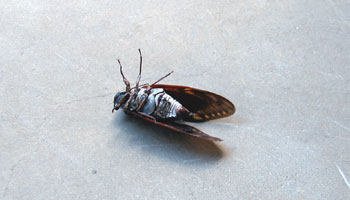 Every summer in Japan you get cicadas, or “semi” (蝉) in Japanese. Not the type that come out once every 17 or 18 years, this bunch comes out every summer, and man, do they make a lot of noise. The Japanese characterize this noise as, “meeeee, meeeee, meeeeeeee.” To which I then comically note how selfish they are. That is what Japanese people refer to as an “Oyaji gyagu,” (親父ギャグ) or an “old man’s gag.”
Every summer in Japan you get cicadas, or “semi” (蝉) in Japanese. Not the type that come out once every 17 or 18 years, this bunch comes out every summer, and man, do they make a lot of noise. The Japanese characterize this noise as, “meeeee, meeeee, meeeeeeee.” To which I then comically note how selfish they are. That is what Japanese people refer to as an “Oyaji gyagu,” (親父ギャグ) or an “old man’s gag.”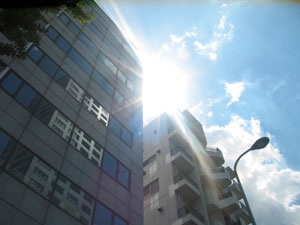 It’s 38 degrees C (100 F) out there, but it feels even hotter. If you’re out in the sun, then just forget about it. A breeze doesn’t help much, it’s just a blast of hot wind.
It’s 38 degrees C (100 F) out there, but it feels even hotter. If you’re out in the sun, then just forget about it. A breeze doesn’t help much, it’s just a blast of hot wind.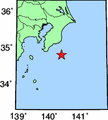 …Or at least a long one. An earthquake just hit, lasting at least a minute, and it was pretty strong. Will update when I know more.
…Or at least a long one. An earthquake just hit, lasting at least a minute, and it was pretty strong. Will update when I know more.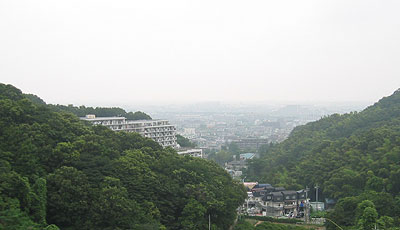
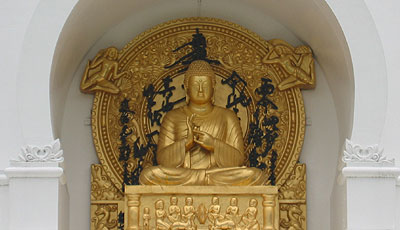
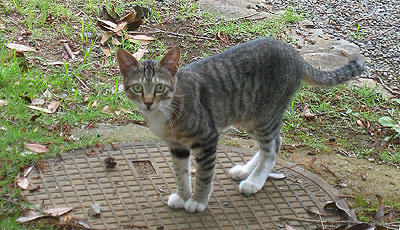
 However, the rules on loudspeaker trucks I cannot abide.
However, the rules on loudspeaker trucks I cannot abide. 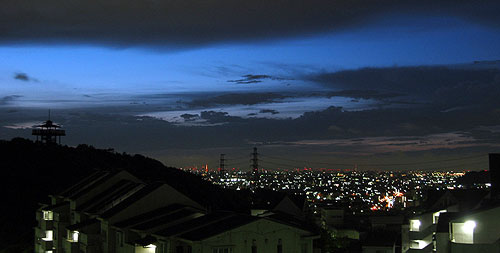


 But Mac is not alone in having a new product; Coke has a new version out as well. They usually have just regular Coke and Diet Coke (called “Coke Light” here).
But Mac is not alone in having a new product; Coke has a new version out as well. They usually have just regular Coke and Diet Coke (called “Coke Light” here). 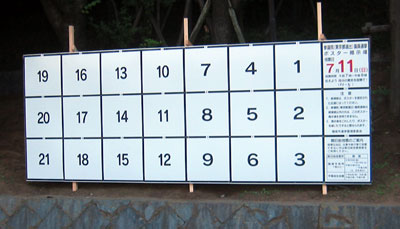 Here we go again.
Here we go again.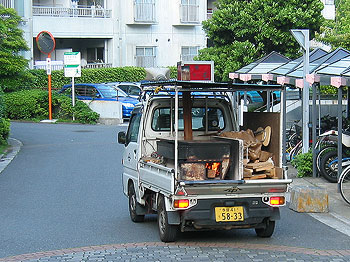 In Japan, there are sales trucks all over the place. Most are just plain noisy and annoying–the secondhand shop truck, the kerosene truck, lunch and snack trucks, and so on. Annoying because they drive at 5 kph and wander through all the driveways and small roads in the neighborhood, all the time blaring annoying announcements and mind-numbing repeating electronic tunes at full blast. Their slow and winding path keeps them well within earshot for perhaps half an hour each, and it’s impossible to shut out unless your listening to headphones with the volume way up.
In Japan, there are sales trucks all over the place. Most are just plain noisy and annoying–the secondhand shop truck, the kerosene truck, lunch and snack trucks, and so on. Annoying because they drive at 5 kph and wander through all the driveways and small roads in the neighborhood, all the time blaring annoying announcements and mind-numbing repeating electronic tunes at full blast. Their slow and winding path keeps them well within earshot for perhaps half an hour each, and it’s impossible to shut out unless your listening to headphones with the volume way up.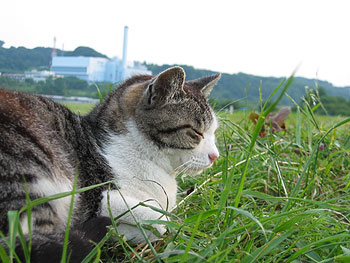 On a nice saunter down to the Tama River today–the weather has been beautiful lately, I couldn’t pass up the chance–I found something which is quite rare in Japan: friendly cats.
On a nice saunter down to the Tama River today–the weather has been beautiful lately, I couldn’t pass up the chance–I found something which is quite rare in Japan: friendly cats. The three Japanese people initially taken hostage in Iraq may have thought that they were having the worst experience of their lives. Apparently, Japanese politicians and right-wing organizations are making it even more unpleasant for them now that they are back home. The way these people have been treated in their home country is cruel, heartless–and highly politically motivated.
The three Japanese people initially taken hostage in Iraq may have thought that they were having the worst experience of their lives. Apparently, Japanese politicians and right-wing organizations are making it even more unpleasant for them now that they are back home. The way these people have been treated in their home country is cruel, heartless–and highly politically motivated.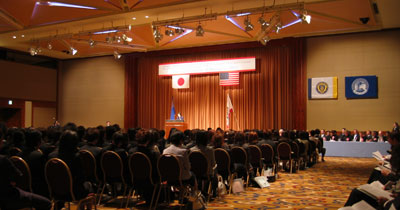
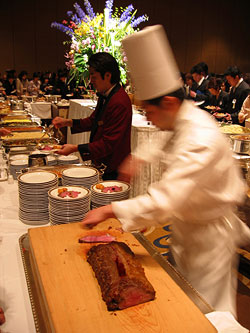 more people have been a bit more nervous about studying abroad. However, that appears to be turning around, as our numbers are growing again–as you can see a bit in the photo above, about 600 new students entering this Spring.
more people have been a bit more nervous about studying abroad. However, that appears to be turning around, as our numbers are growing again–as you can see a bit in the photo above, about 600 new students entering this Spring.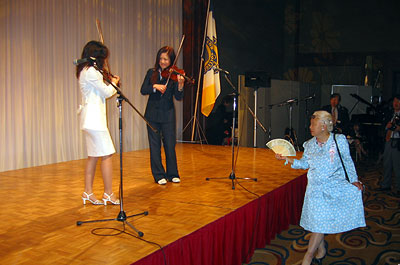

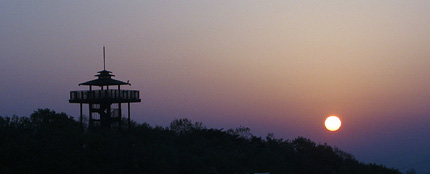
 More details have come out about the three Japanese hostages held in Japan,
More details have come out about the three Japanese hostages held in Japan, 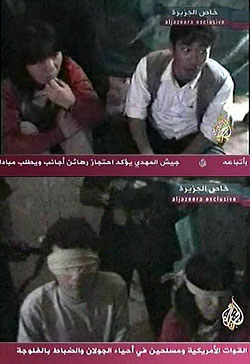 Three Japanese civilians Japanese civilians
Three Japanese civilians Japanese civilians